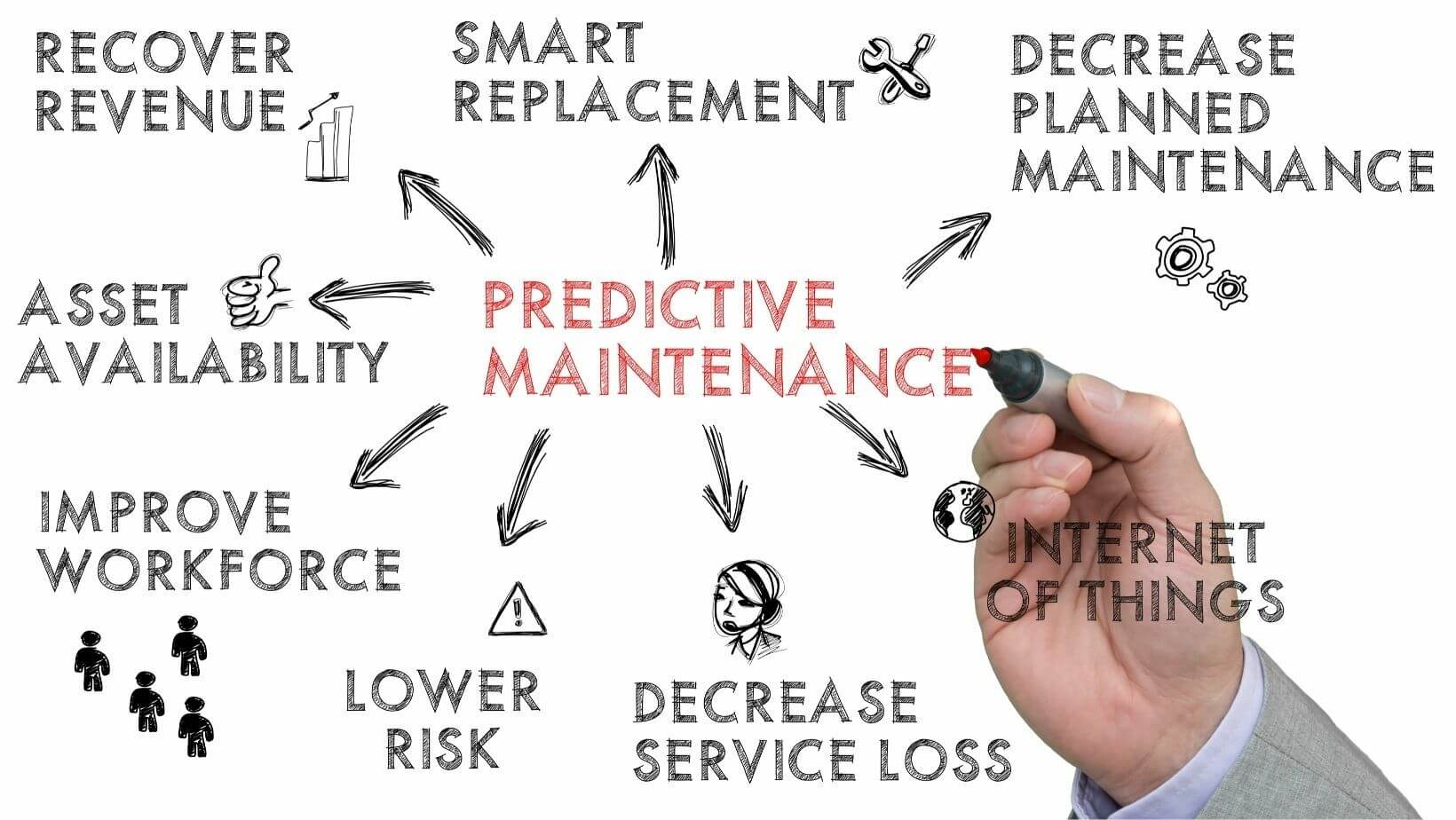
To run a facility or commercial property effectively, it’s essential to respond swiftly and adapt to changes as they occur. Embracing and implementing new technology is key for a facility’s growth and overall safety. From more modern facility management software and mobile applications to equipment updates, hundreds of facility management technology systems and solutions have evolved to not only improve operations and reduce costs but also create a better work atmosphere.
We recently were able to catch up with our Systems Specialist, Jeremy Jones, to go over some of the facility management technology that’s currently employed by Evercor and frequently used in the industry.
Utilization Based Facility Management
Inspections are regularly performed on equipment in accordance with industry standards. The equipment is generally repaired or cleaned on a regular basis, regardless of how much it is used or how long it has been in use. This method is clearly inefficient when dealing with equipment or areas that are used on an irregular basis.
Monitoring equipment with IoT sensors is possible at a granular level. To count the number of people entering a restroom, for example, people counters may be deployed, and cleaners can be dispatched only after a certain number of people have used the restroom, assuring you are maximizing the employees time on location.
Real-Time Asset Tracking
![]() It’s possible to make assets aware of their position using IoT technology. Real-time tracking of essential assets in the inside of a facility is made possible by RFID or Bluetooth technologies, which are used in indoor positioning.
It’s possible to make assets aware of their position using IoT technology. Real-time tracking of essential assets in the inside of a facility is made possible by RFID or Bluetooth technologies, which are used in indoor positioning.
Without the Internet of Things (IoT), monitoring the location of assets may be time-consuming and error-prone. “One of the big things we use is our Fleet GPS solutions,” Jeremy said. “We utilize that to see where our vehicles are, track what we’re doing in real-time, and are able to rapidly deploy the right crew to the right job location based off of that and other sensory information”
Automated Fault Triggering
 Maintenance requests may be automatically generated by IoT sensors attached to the equipment. These sensors can notify a workflow management system that can promptly notify the relevant technician when a piece of equipment malfunctions or a specific event has taken place. As a result, equipment downtime is reduced, operation costs are optimized and building occupants are happier. Many Facilities Management procedures may benefit from the automated fault-trigger idea.
Maintenance requests may be automatically generated by IoT sensors attached to the equipment. These sensors can notify a workflow management system that can promptly notify the relevant technician when a piece of equipment malfunctions or a specific event has taken place. As a result, equipment downtime is reduced, operation costs are optimized and building occupants are happier. Many Facilities Management procedures may benefit from the automated fault-trigger idea.
Jeremy explained, “We use weather sensors, for example, deployed at specific locations to be able to monitor local weather events since weather can vary drastically mile to mile in the northeast. We also have soil temperature sensors that play a big part in landscaping. Being able to nail down the right treatment time to within a couple of days by tracking soil temp and other weather events; It’s a great way to do it.”
Improving Employee Well-Being
 Employees’ well-being is a top priority for most businesses. It’s possible to increase the well-being of building users by measuring and adjusting the interior environment to better meet user demands by the use of sensors and smart building technologies. This type of technology has become very useful, particularly in areas that have dynamic foot traffic, being able to variably adjust the temperature to make the environment consistently comfortable.
Employees’ well-being is a top priority for most businesses. It’s possible to increase the well-being of building users by measuring and adjusting the interior environment to better meet user demands by the use of sensors and smart building technologies. This type of technology has become very useful, particularly in areas that have dynamic foot traffic, being able to variably adjust the temperature to make the environment consistently comfortable.
Monitoring the temperature and humidity of the room continuously also ensures that the environment may be adjusted to the user’s choice. Air quality may also be checked and adjusted to ensure the health and well-being of personnel.
These are just a few of the reasons why contemporary facilities management is embracing IoT and analytics. Predictive maintenance is another driver of IoT adoption, which brings us to our next topic.
Advances in IoT-Enabled Predictive Maintenance For Facilities
 Many facility management teams tend to wait until a problem arises before attempting to repair it, which can be an expensive mistake. It’s possible for facility management to be proactive and prevent problems from arising before they have the chance to become an issue.
Many facility management teams tend to wait until a problem arises before attempting to repair it, which can be an expensive mistake. It’s possible for facility management to be proactive and prevent problems from arising before they have the chance to become an issue.
“We use GIS mapping and satellite imagery to map out areas we’re managing; we also use that info for estimates and to provide specific details to customers about on-location events. We’ve recently switched to facility management software that tracks all of our jobs, hours and costs, along with other data, so basically, that consolidates everything as much as possible under one central system and allows us to make the best judgment calls to save time and money and improve overall efficiency.” Jeremy stated.
For facility management, predictive maintenance is used to continually monitor asset conditions and also allow them to self-monitor. Facility management software can detect whether an asset is about to fail and take action before it does, allowing companies to save money. An additional benefit of a networked system is the ability of assets to interact with one another and alert other assets of failures before they spread.
Predictive measures may also improve asset performance and extend the asset’s lifetime by optimizing asset operations. Virtually everything in a company creates data in some form or another. Keeping track of this data in real time can tell you if anything is out of order, or is going to be, so you can fix it before it becomes a costly repair or replacement.
Deterioration of assets and equipment is a fact of life. It is still possible to use predictive analysis and machine learning to estimate when a certain asset will need to be repaired or overhauled using past data. Improvements in building operating systems are made possible because of the Internet of Things (IoT).
The Future of Effective Facility Management
Facility Management is a challenging industry. Worksites vary, team members are dispersed, and assets act autonomously, allowing management to operate in a silo and resulting in repetitive chores that are difficult to track down.
Creating an effective building operation requires using data that has been sitting in these assets and systems. Connected facilities management is becoming a reality. Fortunately, in today’s world, it doesn’t need a wizard-like figure to design a totally digital IoT smart building. As a result, it calls for a joint effort from management, which has put out clear and concrete objectives. The appropriate approach to facility management may turn it into a fully automated system that benefits everyone involved: tenants, staff, and owners in equal measure.